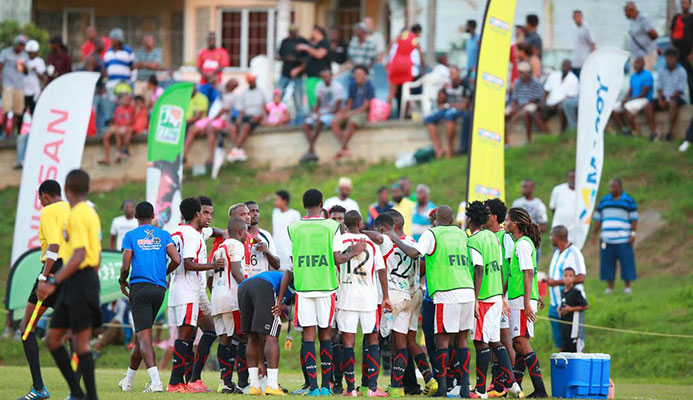Football is one of the most played sports in Trinidad and Tobago. On any given afternoon or weekend, groups of children, men and women, the young and the young at heart gather to play the beautiful game - from sweat matches to five-a-side tourneys, intercol football, the annual BagoSports Beach Soccer Championship, amateur leagues like the Central Bank league, zonal leagues, the Super League and finally the pinnacle of the local game, the TT Pro League. Since its introduction in 2002, professional football in Trinidad and Tobago has gone through its fair share of upheaval but recent indicators point to long awaited revival and steady progress in the right direction.
Over the weekend hundreds of football fans in San Fernando and Barataria were able to enjoy a series of matches when Club Sando was victorious over Police and W Connection triumphed over Caledonia Morvant, while San Juan Jabloteh drew with St. Ann’s Rangers at their respective home grounds of Naparima College and Barataria Recreation Ground. Recently over 3,000 people came out to watch the first official community football game at the newly renovated Morvant Recreation Ground. Also, on Friday, San Juan Jabloteh will be playing for the first time at the Brian Lara Recreation ground in Santa Cruz.
This level of support for the local game comes as no surprise to those of us who have been involved in football administration since its inception. At the Pro League we have long said that as long as the teams are provided with the opportunity to have secure home fields in their respective communities, where they can collect gate receipts, and provide fans with a quality experience that includes modern, up to standard facilities, the government will eventually not have to pay a subvention to the League or clubs.
An Australian study in 2015 found that every dollar spent on community football, generated at least a $4.40 return on investment in terms of social connectedness, wellbeing, mental health status, employment outcomes, personal development and physical health.”
As football in Trinidad and Tobago returns to its community roots, clubs will now be able to increase their fan bases, monetize their assets and utilize these to earn and develop revenue streams. It goes without saying that revenue generating initiatives such as merchandising are critical to the sustainability and viability of football as a sporting product.
The reality of sport in Trinidad and Tobago, like any other business has always been that without a product and brand to market and promote, success will always remain a far off dream. I am confident that as we expand football into communities across the country (games are now being played at Barataria Oval, Morvant Park Street Recreation ground, Mahaica Oval, and Naparima College and soon at the Brian Lara recreation ground in San Juan and New Settlement ground) we are developing a brand and a product that will position the League to take advantage of sports unique opportunities.
The league would not have been able to take this first step without the support of the Honourable Darryl Smith, Minister of Sport and his staff, the Sport Company of Trinidad and Tobago, Mr. Anthony Blake and Mr. David John Williams. I would also like to thank Jamaal Shabazz, Ricarda Nelson, Morvant Caledonia United and all the clubs (Police FC, W Connection, Defence Force, coaches and players, who have met us half way by playing on surfaces which can sometimes be described as challenging, and finally our fans.
Fans are the lifeblood of any sport and you have been coming out in your numbers every weekend. On behalf of the players and the league, I thank you. As we celebrate recent successes, there is much to look forward to as we seek to use this momentum to build the market for local sport and form partnerships across our communities. These partnerships have the potential to not only improve our bottom line, but positively impact our communities and in turn our nation.

